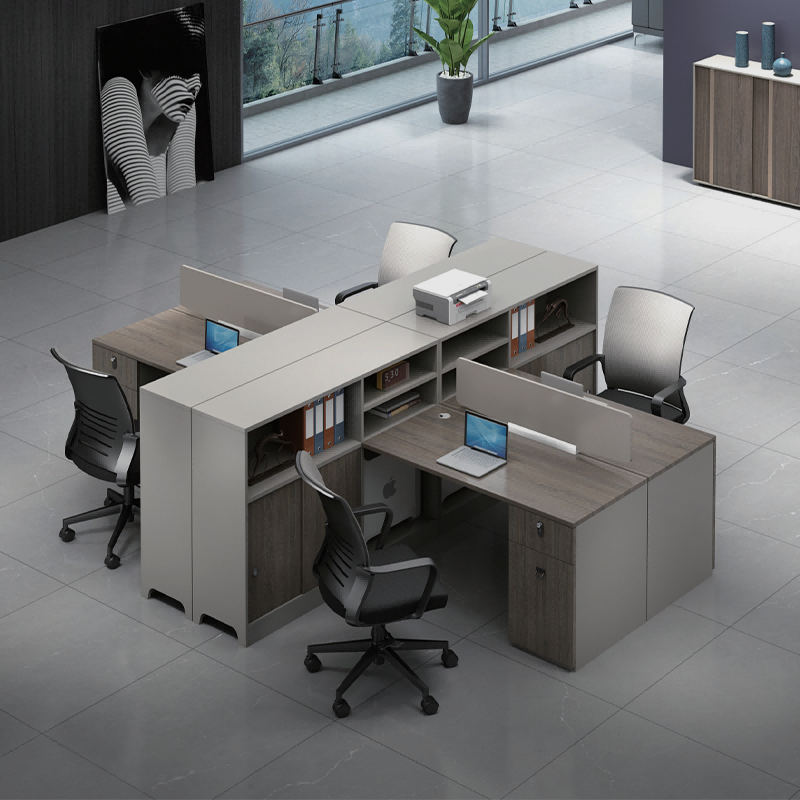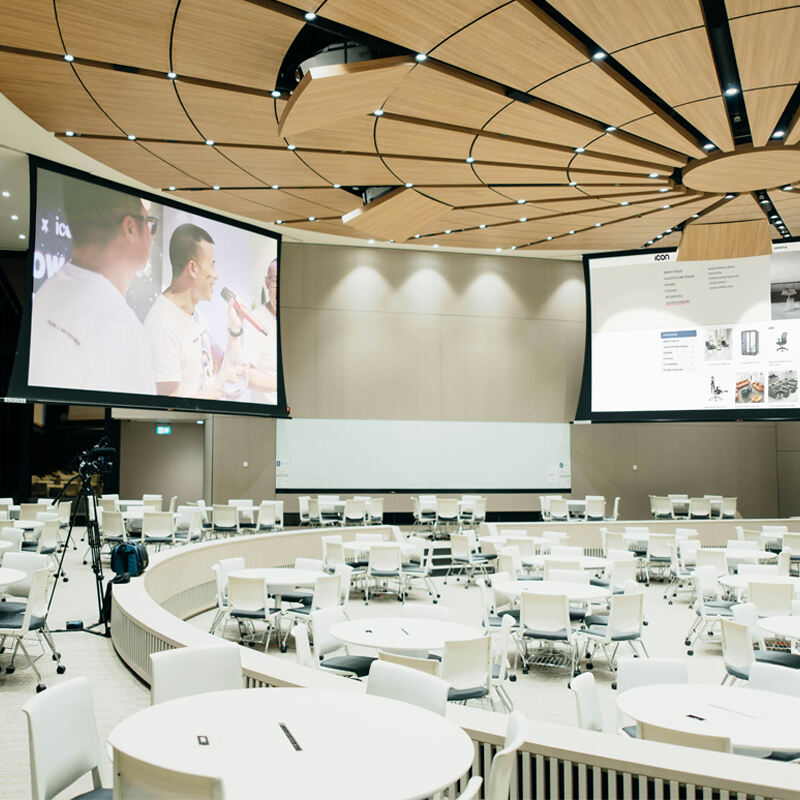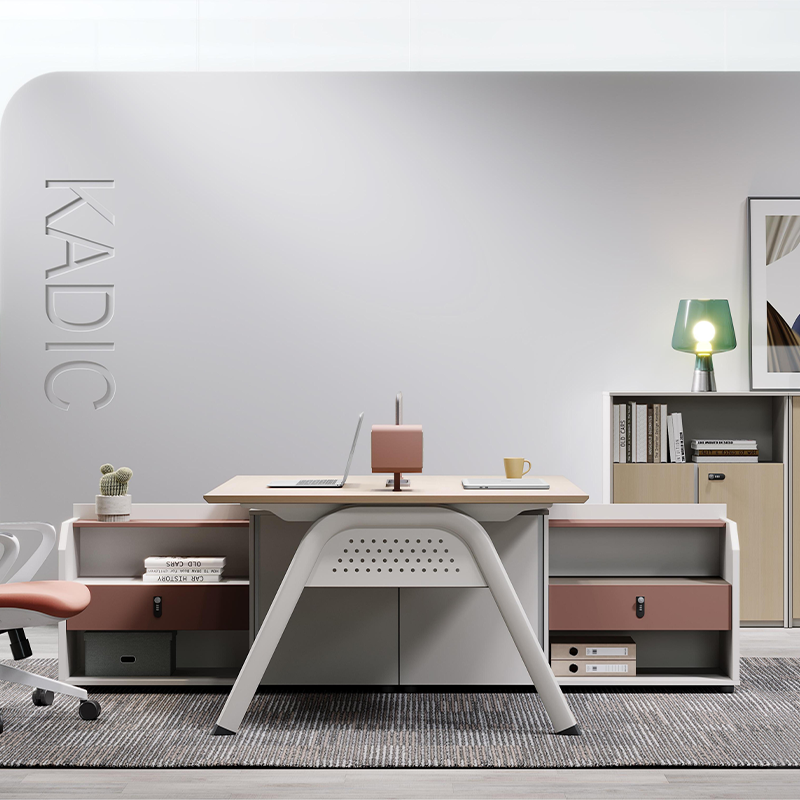Enhancing Employee Comfort with Ergonomic Solutions
The Science of Ergonomic Seating
Ergonomic seating offers significant physiological benefits, such as reduced strain on the spine and improved posture, which can substantially enhance employee comfort. By properly supporting the natural curvature of the spine, ergonomic chairs help maintain correct posture, reducing fatigue and discomfort during long working hours. In fact, studies from health organizations have shown that the use of ergonomic chairs can decrease the rate of back pain by up to 50%, underscoring their importance in office settings.
These chairs are typically made from materials like memory foam and mesh, which provide superior comfort and support. Memory foam adjusts to the body's shape, cushioning pressure points, while breathable mesh keeps users cool, enhancing comfort throughout the day. Given these benefits, ergonomic seating is an essential component of modern office furniture aimed at improving employee well-being and productivity.
Adjustable Workstations for Personalized Comfort
Adjustable workstations, particularly sit-stand desks, have become pivotal in reducing sedentary behavior among workers. These desks allow employees to alternate between sitting and standing, thereby promoting movement and preventing the adverse effects of prolonged sitting. Studies indicate that using sit-stand desks can boost employee productivity by 12%, highlighting their value in the workplace.
User testimonials frequently extol the benefits of these desks in enhancing personal comfort and accommodating individual preferences. Health experts often emphasize these desks' role in personalizing work environments, catering to unique body types and work styles, which contribute to increased satisfaction and efficiency among employees.
Preventing Workplace Injuries Through Design
Integrating ergonomic design principles in the workplace is crucial for preventing musculoskeletal injuries. According to statistics from the Centers for Disease Control and Prevention (CDC), ergonomic tools and design can significantly mitigate the risk of injuries related to repetitive strain and poor posture. By adopting proper desk heights and keyboard positions, employers can foster a safe and healthy work environment.
Such designs not only aid in injury prevention but also result in lowered healthcare costs for employers due to reduced instances of work-related injuries. Examples of effective ergonomic design include adjustable monitor heights and the use of footrests, which collectively enhance comfort and reduce strain. Prioritizing ergonomic design is a strategic investment in employee health and company productivity.
Boosting Productivity Through Functional Design
Optimizing Workspace Layouts
Optimizing workspace layouts plays a crucial role in balancing team collaboration and individual focus, ultimately boosting overall productivity. Whether adopting an open or closed workspace, the design significantly impacts how employees interact and concentrate. For instance, case studies demonstrate that companies reallocating office space to blend open collaborative areas with private zones see noticeable improvements in productivity metrics. Key factors such as efficient pathways and smooth flow within the office environment enhance employee engagement and satisfaction. A well-thought-out layout not only encourages more spontaneous interactions but also minimizes distractions, fostering a productive work atmosphere.
Smart Storage Solutions
Incorporating smart storage solutions within the workplace helps in significantly reducing clutter, which is essential for maintaining focus and increasing productivity. Organized workspaces are linked to higher efficiency levels, with statistics showing that they can boost productivity by measurable margins. Examples like modular shelving systems and compact file storage units highlight the efficiency of innovative storage systems in the office. Such systems not only save space but also make retrieval easy, thereby minimizing time wasted searching for documents. The integration of smart storage solutions into office design ensures that the workspace remains tidy and conducive to productivity.
Lighting and Acoustics Considerations
Proper lighting and acoustics are key considerations in office design as they significantly impact employee performance and well-being. Good lighting design reduces eyestrain and enhances mood, directly correlating to increased productivity levels. Studies confirm that workplaces with optimal lighting conditions show improved worker efficiency. Similarly, acoustics in an office setting should not be overlooked; excessive noise levels can disrupt focus and reduce work efficiency. Research indicates that managing noise levels appropriately can enhance concentration. Tips for achieving optimal conditions include using ergonomic lighting fixtures and installing soundproofing materials. These elements create a balanced environment, promoting employee focus and productivity.
Fostering Collaboration with Flexible Workspaces
Modular Furniture Systems
Modular furniture plays a critical role in creating adaptable office environments. By design, modular furniture includes pieces like desks, tables, and storage units that can easily be reconfigured to meet changing needs. This flexibility allows businesses to optimize space usage without the need for constant investments in new furniture. Companies like Google have successfully used modular systems to foster an environment that encourages teamwork and creativity by allowing employees to quickly modify their workspaces to suit group or individual tasks. Furthermore, the economic benefits of modular furniture are significant; businesses save on costs associated with moving or redesigning workspaces to accommodate changing team dynamics or business growth, making it a versatile and budget-friendly option.
Creating Hybrid Work Zones
The trend towards hybrid workspaces effectively supports both remote and in-office employees by fostering a balanced work environment. Hybrid zones provide flexible seating arrangements, technology integrations, and privacy options, enabling both collaborative and focused work. Statistics show that such designs can increase employee satisfaction and productivity, with a recent survey indicating a 20% satisfaction boost among employees in companies implementing hybrid designs. Elements vital to hybrid workspaces include soundproofing for quiet work, shared collaboration areas, and ergonomic furniture to cater to different work styles. These designs accommodate diverse work needs and adaptability, making them a cornerstone of modern office environments focused on productivity and employee well-being.
Reflecting Corporate Culture Through Furniture Choices
Modern vs. Traditional Design Statements
The choice between modern and traditional furniture design can significantly reflect a company's brand and culture. Modern furniture often embodies innovation and forward-thinking, appealing to companies with a progressive or tech-focused identity. On the other hand, traditional furniture can exude stability and timelessness, often aligning with corporations that value heritage and long-established authority. For instance, tech companies like Google have famously used modern, open spaces with ergonomic furniture to cultivate creativity and collaboration. A study conducted by JLL Research indicates that investment in workplace design enhances employee satisfaction and productivity. Market trends show a growing preference for office aesthetics that promote flexibility and creativity, reflecting the corporate culture's dynamic needs.
Color Psychology in Office Environments
Color psychology plays a crucial role in influencing employee mood and productivity, especially through office furniture choices. Research has demonstrated that specific colors can evoke different psychological responses; for instance, blue hues can instill calm and focus, while yellow can enhance creativity and energy. A study published in the Journal of Environmental Psychology underscores how green spaces can positively impact wellbeing. Workplace research recommends using cooler colors in areas designated for focused work and warmer tones in collaboration areas to stimulate communication and activity. Office aesthetics incorporating thoughtful color schemes can create environments that align with the intended corporate culture, optimizing both employee focus and interaction.
Establishing Professional Credibility with Quality Furnishings
Material Quality and Brand Perception
High-quality materials in office furniture reflect a company's commitment to excellence, significantly influencing brand perception. When clients visit an office furnished with top-notch materials, such as solid woods or polished metals, they often associate the quality of the furniture with the company's professional ethos. A study by the American Society of Interior Designers highlights that well-designed and high-quality environments boost client trust and satisfaction, enhancing the business's credibility. Furthermore, the use of sustainable materials not only elevates the furniture's quality but also aligns the company with global eco-friendly practices, promoting a responsible brand image. As businesses increasingly prioritize sustainability, incorporating recycled or certified eco-friendly materials can positively impact public perception and attract environmentally conscious clients.
Maintenance and Longevity Factors
The ongoing maintenance of office furniture is a crucial aspect of ensuring it remains a long-term investment. Regular upkeep, such as cleaning and checking the integrity of components, can extend the life of office furnishings, saving costs over time. Tips for maintaining office furniture include using appropriate cleaning agents, avoiding exposure to harsh environments, and regular inspections for wear and tear signs. According to data from the International Facility Management Association, investing in high-quality furniture reduces replacement frequencies, providing cost benefits over time. These durable furnishings not only support efficient operations but also enhance professional credibility by presenting a well-maintained environment to clients and visitors. By choosing robust materials and adhering to maintenance protocols, businesses can ensure their office décor remains a symbol of reliability and quality.
FAQ
What are the benefits of ergonomic seating in the workplace?
Ergonomic seating offers benefits such as reduced strain on the spine, improved posture, and decreased back pain, enhancing comfort and productivity.
How do adjustable workstations improve employee productivity?
Adjustable workstations like sit-stand desks promote movement, reduce sedentary behavior, and increase productivity by 12%.
Why is ergonomic design important in preventing workplace injuries?
Ergonomic design reduces the risk of musculoskeletal injuries by promoting proper posture and reducing strain, resulting in lower healthcare costs.
What impact do lighting and acoustics have on workplace productivity?
Proper lighting reduces eyestrain and improves mood, while good acoustics helps focus, both boosting productivity levels.





